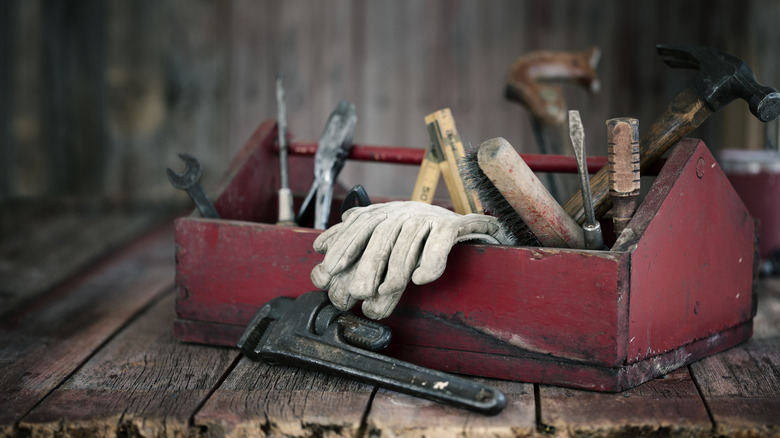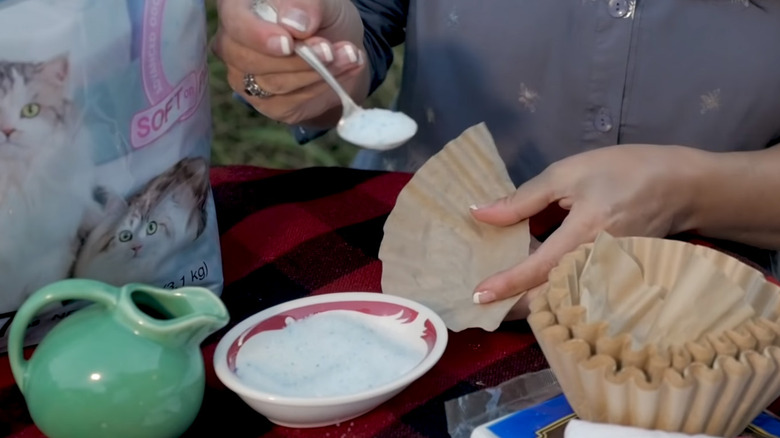Toss Some Kitty Litter Into Your Toolbox And Thank Us Later
Your tools probably have it kind of rough. They stand up to a lot of abuse and then get stored in places where temperature swings and moisture control problems are rampant — unless you have a climate-controlled garage. Your tools don't complain, but they do rust. And once the rusting starts, it can be difficult to control. One step you can take is simple, effective, and cheap: use cat litter made from silica gel to suck up the moisture in your toolbox.
You're familiar with silica gel because you see it in just about every package containing electronics and medications, but it's also in packages of pepperoni. It's what's in those little packets that warn, "Do not eat." DIYers use it to protect 3D printer filament and dry hydrangea centerpieces too. Silica gel is a desiccant that can remove moisture from the air in an enclosed space (you can't, of course, dehumidify the outdoors). One such enclosed space that could probably use some moisture removal is your toolbox. The good news is that you don't have to save pepperoni-scented packets or order bulk desiccant online; silica gel cat litter can be found in many stores locally. And don't worry; while you still shouldn't eat this (or any other) kitty litter, this isn't the same material as crystalline silica, which can be extremely dangerous to inhale. Crystalline silica cannot trap moisture by adsorption like silica gel can, and it isn't useful as a desiccant.
Make your own kitty litter sachets
The word "sachet" might call to mind dainty fabric balls containing rose petals or lavender, and while that might be nice for your linesman pliers, what you need for your toolbox is a silica gel sachet or two. It's just a matter of sealing up a few teaspoons of silica gel cat litter in cheesecloth, coffee filters, tea bag mesh, or nylon stockings. You can staple, glue, tie, or sew the sachets to seal them; what's important is that you keep the beads in so moisture can move freely through the mesh or cloth.
Here's the key to getting the most out of your DIY cat litter sachets: keep your toolbox closed. The silica gel isn't going to be able to remove moisture from your entire garage, especially if you have a garage with an uninsulated metal roof; condensation droplets may fall into your open toolbox at certain times of the year. Recharge the silica gel periodically to remove its moisture in your oven. Instructions vary wildly, but desiccant manufacturer Humi Pak recommends baking in a 175-degree Fahrenheit oven for 15 minutes.
Keep in mind that silica gel desiccant is a protective step you should take after eliminating major sources of moisture by sealing leaks and dehumidifying/venting rooms properly, in addition to using moisture displacement and rust prevention oils to protect your tools. Think of it as a supplemental tool, not a first line of defense.

